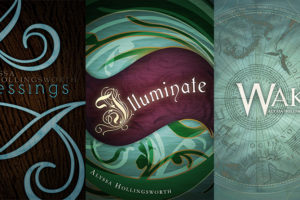I’ve just finished reading through my WIP, Blessings, in under 24 hours, and I noticed a few things:
- My revision techniques really saved me from any terrible transgressions in passive voice (FINALLY. HUZZAH!!!).
- I still could be more thorough in pinpointing my weaknesses and attacking them head-on.
I thought I’d share the tricks I’m learning, which just might help expedite your future revision goals!
1. Passive voice.
I have a hard time consciously recognizing passive voice unless it is literally highlighted in yellow in front of me. When I’m at the stage in my revision that I’m ready to go for sentence-level edits, I use the Replace function to highlight any “was(es),” “were(s)” or “-ing(s).” (In programs that don’t let me replace+highlight, I normally do replace and have the replaced word/letters be in all caps so they stand out.)
This makes passive voice bright and colorful all over my page. I then try to go through and change everything I possibly can without sacrificing clarity/rhythm.
2. Overused words.
If I have action taking place in a contained space (on a bridge) or I notice that a character is obsessing over something (hands), inevitably I’ll end up needing to go through an edit looking for overused words. I use the same technique as above—I highlight or capitalize the words, find where they are most effective, keep those instances and do my best to change or cut the other offenders.
Bonus: This works best when you read a longer section of your work. For instance, in Blessings, I found that I used the word “gesture” a lot in the first third of the novel but almost not at all after that. It’s only used maybe once per chapter, but it’s often enough to be annoying.
3. Overused actions.
Darn you, “she licked her lips,” and how easily you convey many an emotion! As I progressed in my novel read-through, I came across a few actions that characters did a bit too often. Licked lips was the worse offender, and several of my characters were doing it. In revision, I’ll be making a list of habitual actions each character has (individually). Then I will use my highlighting magic to find each instance and make sure A) the right character is doing it and B) it’s not being overdone.
Bonus: The Emotional Thesaurus can be a great place to look to find new ways for your characters to express their feelings in action.


















